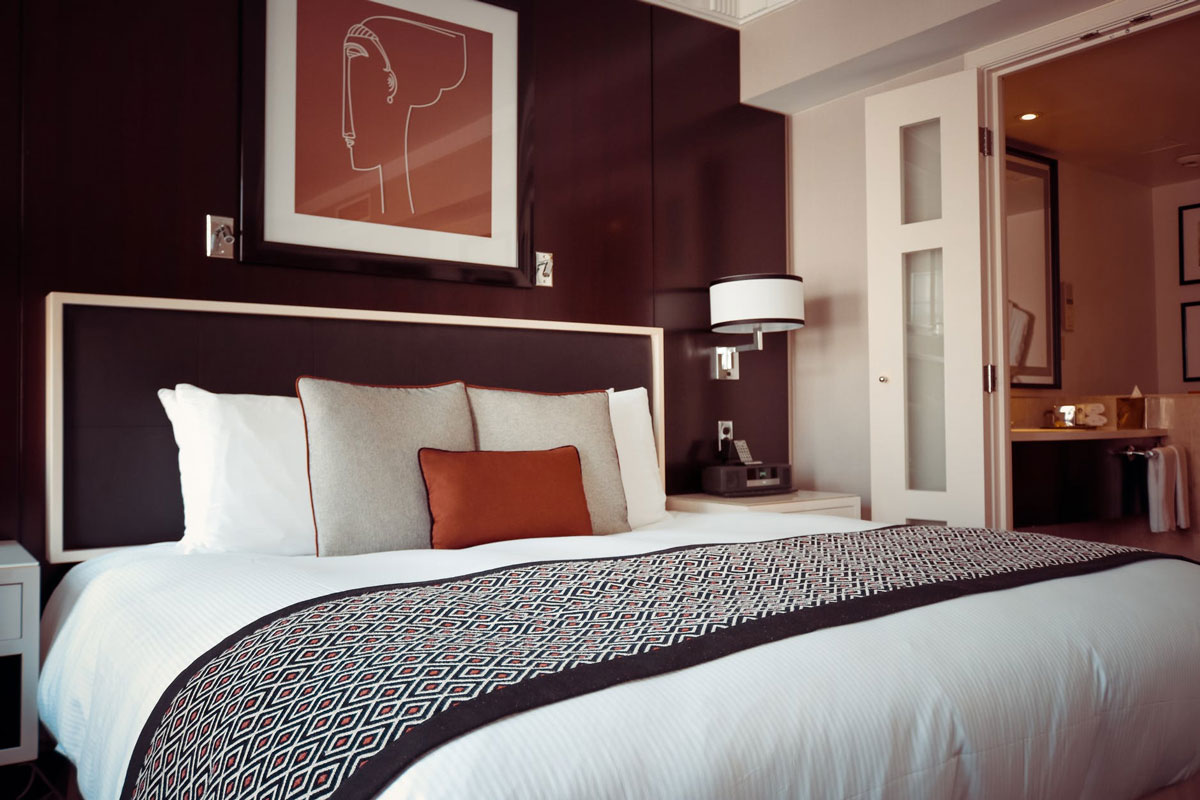The customer service team is always listening, taking notes, and quantifying complaints to ensure our products are continually improved. Due to selling directly to you, the customer, via Amazon, we can use product reviews to help us improve our existing products or help further development of new products.
How to Control Indoor Temperature and Humidity at Home
Everyone wants to be comfortable in their own home. One way that people can do this is by controlling the temperature and humidity at home.
You’ll be able to save money on energy bills by heating or cooling only the rooms you’re using, instead of wasting heat or air conditioning on empty areas. Plus, it’s easier to control the climate at home than outdoors, which means you can set an optimal environment for yourself without worrying about changes in weather conditions.
Table of Contents
Temperature and humidity variations
The temperature and humidity levels inside your home can be greatly influenced by the weather outside your home. These are naturally dependent with the changing seasons (and extreme temperatures they bring) and on whether doors and windows are left open.
Ideal home temperature and humidity levels
There’s no exact “ideal” home temperature and humidity levels for everyone. After all, the right temperature and humidity levels are subjective according to one’s preferences. Generally, we feel comfy when the environmental conditions allow our bodies to maintain their normal temperature (around 37°C). The ideal temperature for you is when you aren’t aware of the temperature.
The temperature at home should generally be in the 20°C to 22°C range and up to 24°C for older people. Having a lower temperature to 19°C or even 18°C would not be an inconvenience to a person in normal health.
Besides the actual temperature of the air in a house, the temperature at home can be perceived by a home’s occupants varies depending on:
- where there are cold-air drafts
- radiating effect of cold or hot surfaces (walls, floors, ceilings, window glass, etc.)
- relative humidity
- factors like age, clothing, level of physical activity, state of health, degree of fatigue, etc.
Relative humidity plays a determining role in the quality of your indoor air. It is recommended to keep the humidity above 30% in the winter and make sure it doesn’t exceed 55% in summer. Ideally, the relative humidity should be somewhere between those percent values at all times.
Excessively high humidity in your home creates an ideal environment for mold, fungi, and dust mites which are powerful allergens that could lead to respiratory problems such as asthma. Dry air, on the other hand, is also harmful to people who have eye or skin conditions.
For example, if your bedrooms are on the top floor and you only have one thermostat to regulate the temperature of the entire home, you’ll probably want to keep the thermostat at a lower temperature so you don’t overheat the bedrooms. Finding the right humidity level at home can be achieved when you have a reliable temperature and humidity monitor which are usually in one gadget. That way, you can easily manage and regulate them.
If you like cozy sweaters and snuggle under a soft blanket, consider turning down the thermostat by a couple degrees, especially when it’s summer. If you prefer to roam around the house in shorts and a tank top, you can raise the temperature a notch to keep your home warmer.

Best room temperature for sleeping
How home temperature and humidity affect your health
As we’ve previously discussed, extreme temperatures (too hot or too cold) and dry air can affect your health. Dry air can worsen and cause many health problems. Researchers believe dry air can lead to lung problems like asthma, COPD, and other respiratory issues. Low relative humidity and poor indoor air quality can lead to more allergies and make it easier for particles such as mold spores or dust mites to mix and circulate in the air.
Numerous studies have shown that humidity levels can affect the survival rate for airborne pathogens. Indoor relative humidity appears to have an impact on the infectivity and survival rate of harmful microorganisms. It is now more important than ever to ensure indoor humidity is at its best.
Dry air can also cause common winter ailments like chapped lips and dry skin. Dry sinuses can make it more difficult to catch cold and flu symptoms.

Tips on how to control indoor temperature and humidity at home
There are many ways to control the temperature and humidity at home but you can start with simple ones. You can start with more doable and sustainable ways without spending too much. Here are some helpful tips on how to control indoor temperature and humidity at home.
1. Get a reliable hygrometer and thermometer device
Regularly monitoring the temperature and humidity in your home can help you properly address extreme temperatures and humidity, as well as regulate the temperature and humidity on specific areas in your home. Having a reliable hygrometer and thermometer device installed at home can help you. ThermoPro’s wide array of thermometers and hygrometers can assist you in keeping track of the temperature and humidity conditions at home. You may choose from battery-operated, installed, and bluetooth devices that monitor these conditions. Plus, these devices can send the data gathered via an app so homeowners can also regulate their home temperatures and humidity remotely. Choose the best digital hygrometers for your home especially when you have smart devices interconnected. Use the data gathered by the hygrometer to calibrate your thermostat accordingly.
2. Turn on your AC or fans
Your air conditioning system is a vital part of your home. It naturally helps reduce humidity because it’s introducing cooler, drier air while removing warm humid conditions from the inside! Keeping this in mind will help you maintain an environment free of mold and mildew – but don’t forget about other factors like pollen counts which can affect both health & comfort levels for people who suffer allergies across all ages ranges (from young children up through senior citizens). Get yourself checked out by having someone tune-up or replace filters regularly; anything restricting airflow could lead to problems down the line if left unattended for too long.
Unregulated indoor humidity is one of the most common sources for mold to grow. Indoor air quality can be improved by lowering indoor relative humidity levels below 50% with proper ventilation and using room-specific humidifiers where necessary or desired, such as in an office setting during winter months when people are more likely have seasonal allergies due their cold northerly winds bringing allergens into homes through window sills allowing year round use outside those seasons would not seem possible without them because there’s no way that any amount moisture could get inside yet still stay cool enough at all times.
3. Improve your thermal insulation
In order to keep a well-insulated building that is free from air leaks, you can improve its thermal insulation. Doing so will help maintain the temperature inside your home more easily and even out during different seasons of year by counteracting seasonal changes in humidity levels or solar radiation exposure rates before they have time to cause any problems with interiors.
4. Have an air exchanger or humidifier
When trying to reduce indoor humidity, don’t add moisture. Leaking pipes and faucets do the opposite of what you want! Fix any leaks that are present by wrapping exposed pipes in insulators—this will keep condensation from forming on them so they stay dry at all times.
Signs for this include stained drywall or wet spots near where water has seeped through into another part of your house- these could be indications that there’s an issue with insulation around those sections plus increased bills because more energy goes towards heating/cooling.
5. Clean your gutters
Gutters are often the cause of indoor water leaks, which is terrible for both your home and you.
It’s important that they’re cleaned out regularly so as not to damage either structure or quality-of-life inside it! With downspouts directed away from homes by at least 6 feet (or more), this should be an easy task even if there’s been some rain lately.
6. Dry your laundry outside
Many of us have clothes that we can’t put in the dryer so we hang them somewhere inside the house. You may use drying racks in winter, but if you keep it inside during summer, it will just make your home more humid.
Get a drying rack or clothes line and hang your clothes outside on your porch, your backyard, or balcony. Check your neighborhood bylaws to make sure there aren’t restrictions when it comes to hanging clothes outside. If ever you can’t dry the clothes outside, you may need to have a dehumidifier to keep your home humidity even when you hang your clothes at home. Homes with a basement need a dehumidifier as well.
7. Get a dehumidifier
The surest way to help you regulate indoor humidity aside from hygrometers and thermometers are dehumidifiers.
They fit right inside your furnace air handler and they remove moisture from the air as it passes through. When that air reaches you, it’s ddy and cool just the way you may like it in the summer.
The best part? You’ll be less likely to use your AC less, since the dehumidifier now helps keep humidity levels low which means lower costs in cooling bills.
8. Move your house plants
Plants are a beautiful addition in our homes, and they release moisture which may increase humidity levels in your home. Get a temporary relocation to either a single well-ventilated room, or to a place.
9. Use Charcoal Briquettes
Charcoal briquettes are not just for barbecues, but they also make a great dehumidification tool. All you have to do is to get a few charcoal briquettes and place them in a bucket. Charcoal is highly absorbent so it can absorb the moisture in the air. You can replace them every 2 or 3 months.
10. Open a window
Yes, sometimes, the best way to regulate humidity at home is to open a few windows. Let the air flow inside the house so the humidity levels can be even. But, be mindful of doing it in extreme temperatures and when you’re using an AC because it might have an adverse effect.









